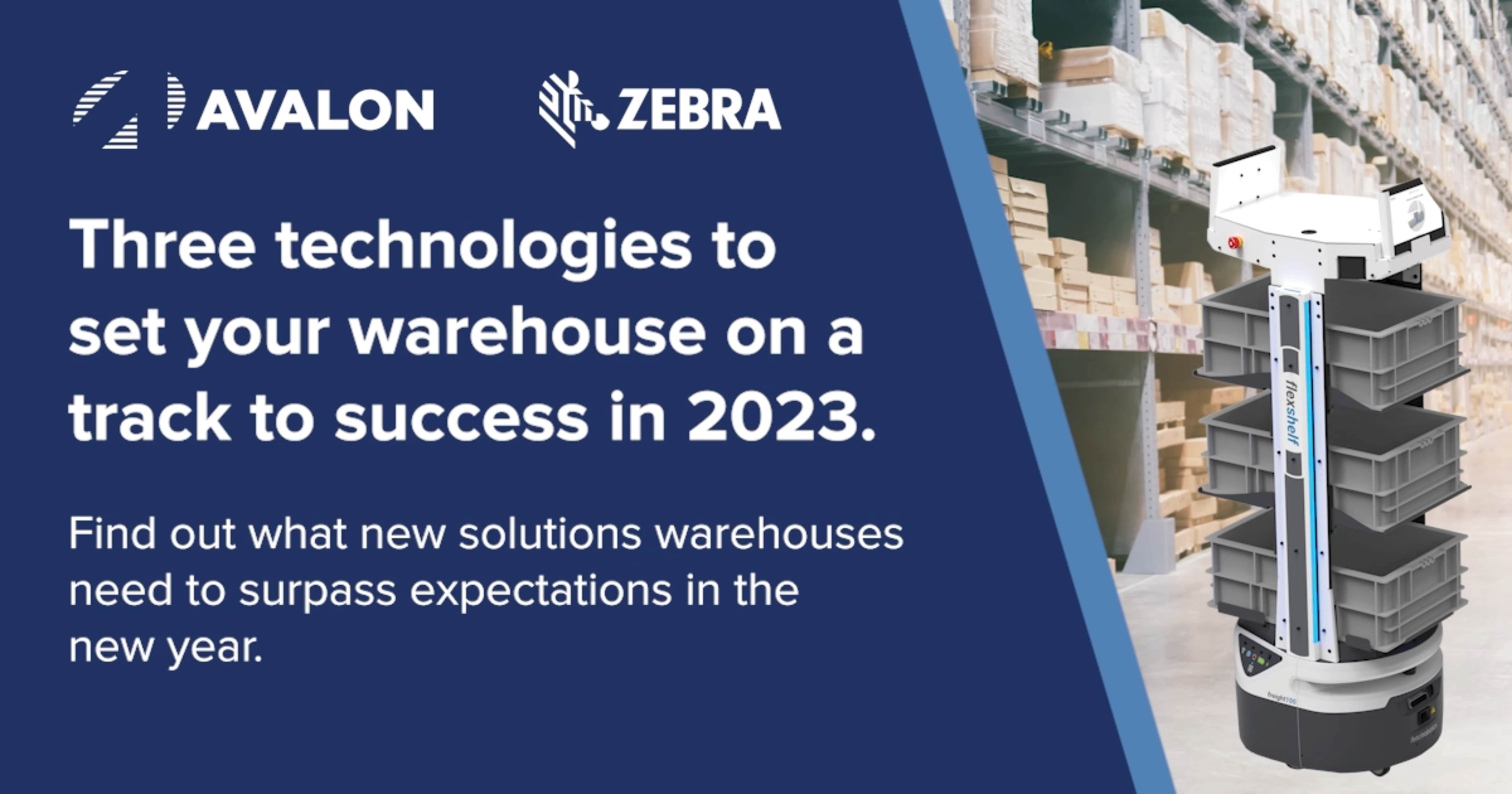Peak season highlights what consumers are demanding from warehouses so decision-makers can adjust. Higher consumer demands and increased shipping costs pressure warehouse decision-makers to find solutions that improve inventory accuracy and shipping efficiency. To manage the new year, the warehouse industry is employing several strategies to deal with potential shipping problems ahead. Studies indicate that over half of warehouse decision makers intend to grow their networks as a strategy for the new year. Additionally, surveys show that 85% of warehouse decision-makers have implemented mobility solutions, so frontline workers can improve inventory accuracy. Despite this, 79% of warehouse decision makers are concerned they will not meet their business objectives without automated systems to handle the following challenges:
- More SKUs stores in the warehouse
- Labor shortages
- Omnichannel shopping
- Competition in the on-demand economy
- Less or unused warehouse space
- Fulfillment demands
Set Your Operations Up for Success
Higher returns after peak season, labor shortages, and a greater risk of cybercrime can decrease warehouse efficiency in the new year. To combat these issues, automation experts recommend preparing operations for incoming changes with future-forward technologies. Consider these solutions that make it easier to navigate challenges with simple but effective warehousing:
- Modernized order fulfillment technologies – A big trend and issue that continues for warehouses this year and next year are labor shortages. Recent studies show that 73% of warehouse operators can’t find enough labor. Enterprise robotics can help manage the pains of fewer workers and higher labor costs with 3 times more productivity and 50% faster order picking. Robotics also puts less stress on employees in smaller labor pools and can keep workers focused on non-repetitive tasks.
- Connected warehouses and supply chain – A more connected workforce that is informed on deliveries and orders helps your workers stay prepared for the new year’s challenges. Efficient connectivity can help improve asset visibility for smoother reverse logistics and a stronger enterprise network is prepared for cyber threats.
- Easy to use mobile powercarts that improve productivity – Dependable mobility from powercarts provides power to your mobile devices like tablets and printers for more than 8 hours. Reliable power ensures warehouses don’t lose productivity or drain cost. Mobile Power Carts are easy to use and provide unparalleled features for uninterrupted warehousing.
After the holiday season, businesses will need enterprise technology to keep up with challenges like continuing labor shortages and higher returns on top of high expectations. Get more information about how you can optimize inventory accuracy and warehouse visibility with the right solutions.




